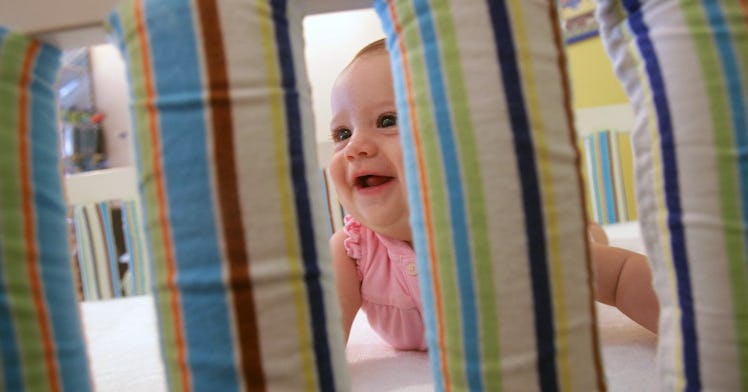The Senate Passed a Bill Banning Crib Bumpers—Here’s What You Need to Know
Crib bumpers have been linked to hundreds of infant deaths and injuries over the last 30 years.

Last week, the U.S. Senate passed a bill that would ban the manufacture, sale, and distribution of crib bumpers, the unsafe crib add-on that has been linked to dozens of infant deaths over the last 30 years. The Safe Cribs Act, introduced in March of 2021, received bipartisan approval from the Senate and now must be passed by the House before heading to President Biden’s desk to be signed into law. Here’s what to know.
Crib Bumpers are Dangerous, Yet Still in Stores
According to data from the Consumer Product Safety Commission, (CPSC) between 1990 and 2016, 113 infants died in cribs that contained crib bumpers—soft, padded additions intended to protect babies from crib rails and between 1985 and 2012, 146 babies sustained injuries directly related to crib bumpers including choking and near-suffocation.
Crib bumpers are still available for purchase in stores across the United States despite the safe sleep guidelines from the American Academy of Pediatrics recommending against them, though the sale of crib bumpers has been banned in some states.
“A crib, bassinet, portable crib, or play yard that meets the safety standards of the Consumer Product Safety Commission (CPSC) is recommended along with a tight-fitting, firm mattress and fitted sheet designed for that particular product. Nothing else should be in the crib except for the baby,” said the American Academy of Pediatrics (AAP) in a statement regarding safe sleeping guidelines for infants.
“The American Academy of Pediatrics has told caregivers for years that padded crib bumpers are unsafe because we know that they have been tied to dozens of infant fatalities,” Ben Hoffman, M.D., chairman of the AAP’s Council on Injury, Violence, and Poison Prevention, told Consumer Reports.
“And while the products are advertised as a way to protect infants from getting their arms and legs stuck between crib slats,” he adds, “research shows babies do not need protection from this problem, which is more of an inconvenience rather than a threat to their safety.”
The fact that crib bumpers are regularly included in crib bedding sets can be confusing for new parents, explained Senator Tammy Duckworth, a co-sponsor of the Safe Cribs Act. “You’ve heard ‘Lay your kids down in their cribs with nothing’ … and as a parent, especially a new parent, you look at this child, and you’re like: What do I do? You’re trying to do the right thing,” Duckworth told The 19th News.
“And then you get all of these gifts … and the crib bumpers are part of the set of bedding that comes with the fitted sheet for their crib, and the mobile that hangs over the crib, and it all looks beautiful,” Duckworth explained. “It’s very easy to think, ‘Oh, I need this to protect my child in case they hit their heads … on the bars of the crib. I can see how you would think this way. … This outright ban will make it clear that these things are no longer safe.”
Always Remember the ABCs of Safe Infant Sleep
To combat the risk of Sudden Infant Death Syndrome, the AAP released detailed guidelines on how best to protect infants and ensure a safe sleeping environment. Babies should sleep Alone, in a separate sleep space than parents or siblings. Babies should also sleep on their Backs — back sleeping has been shown to reduce the risk of SIDS. And finally, babies should only sleep in their Cribs, and cribs should be empty of everything except a firm mattress. Do not add bedding, stuffed animals, crib bumpers, or pillows to the crib, as these items increase the risk of suffocation.